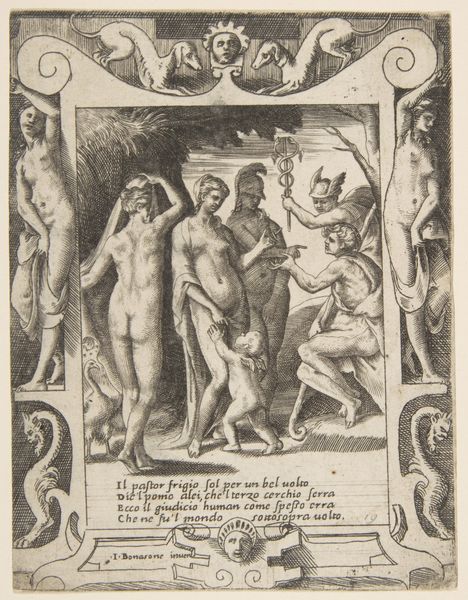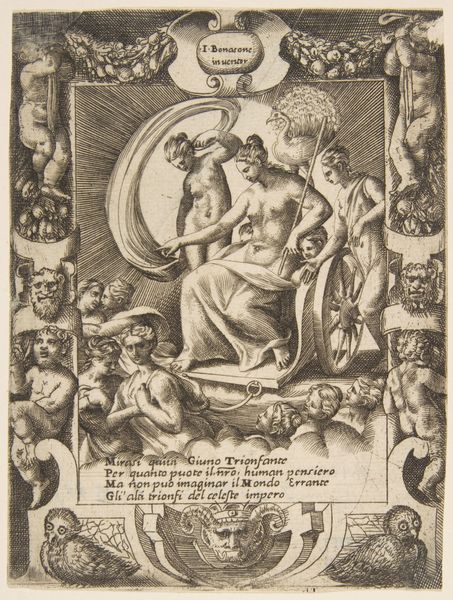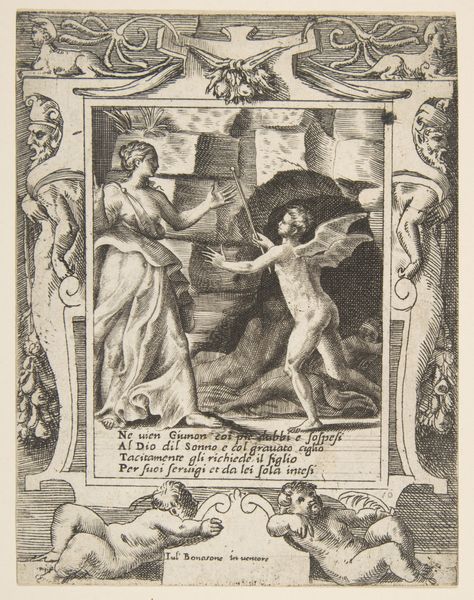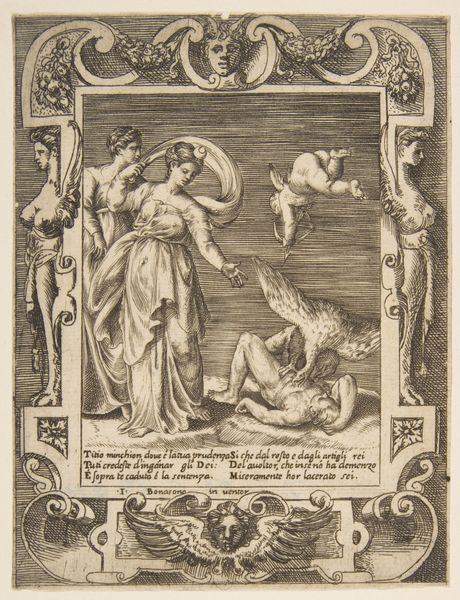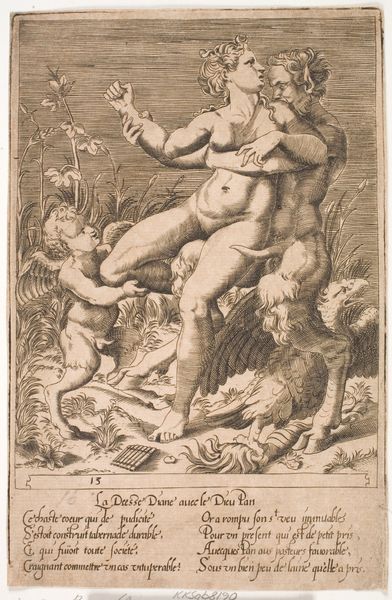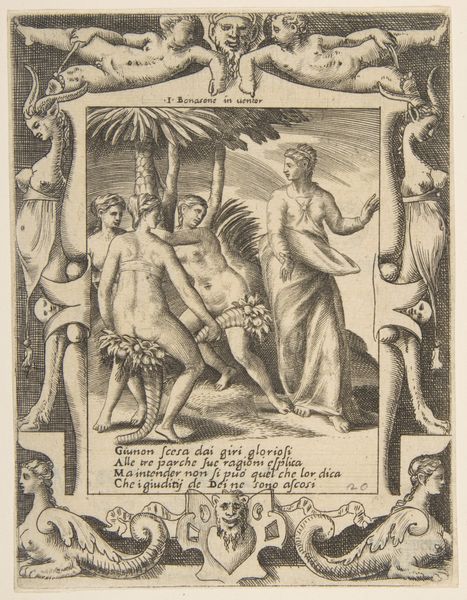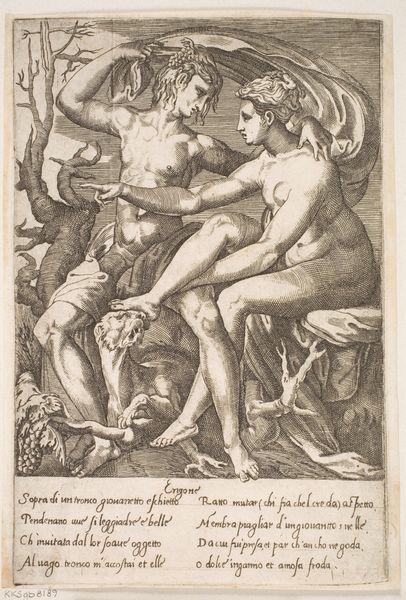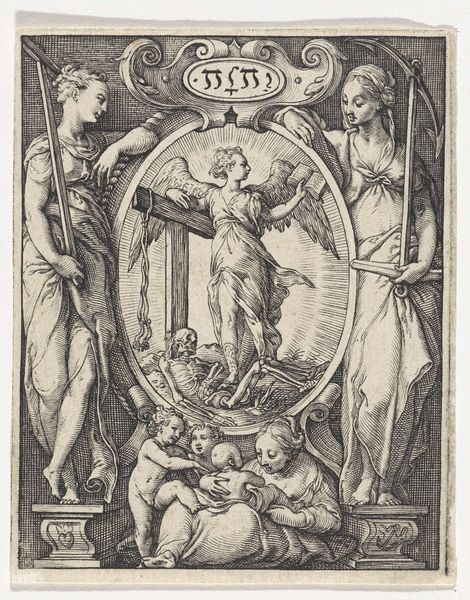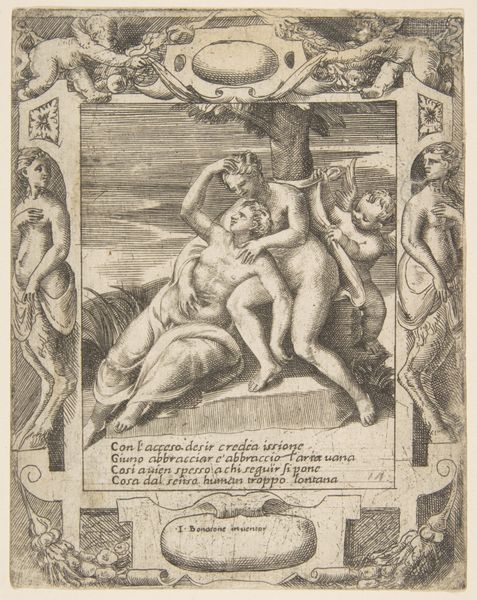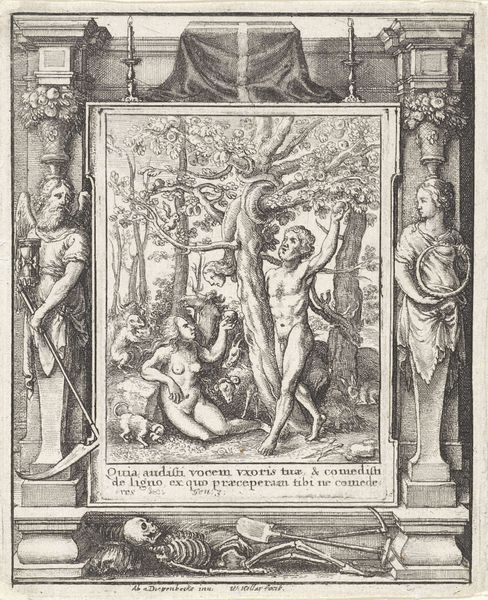
Litigium removed from the body of Chaos while his mother is thrown into the air, set within a frame, from "Loves, Rages and Jealousies of Juno" 1531 - 1576
0:00
0:00
drawing, print, engraving
#
drawing
#
allegory
# print
#
figuration
#
11_renaissance
#
history-painting
#
italian-renaissance
#
nude
#
engraving
Dimensions: sheet: 5 5/16 x 3 15/16 in. (13.5 x 10 cm)
Copyright: Public Domain
Giulio Bonasone made this engraving, “Litigium removed from the body of Chaos,” in the mid-16th century. Engraving is an intaglio process. First, the artist covers a metal plate with a waxy ground, then scratches an image into it with a fine tool. Acid is applied, which bites into the exposed metal lines. Finally, the plate is inked, the surface wiped clean, and the image printed under great pressure, leaving raised lines on the paper. Look closely, and you can see how Bonasone used hatching and cross-hatching to build up tone. The process demands precision and control, virtues prized in Renaissance workshops. But note also the image itself. Bonasone's print speaks to a worldview in which even abstract concepts are rendered with palpable, physical force. Chaos is not an absence of order, but a body from which “Litigium” – strife – must be actively hammered out. This print isn't just an image; it's a testament to the labor of both artist and artisan. It's a reminder that ideas take shape through the skilled manipulation of materials, reflecting the values of its time.
Comments
No comments
Be the first to comment and join the conversation on the ultimate creative platform.
